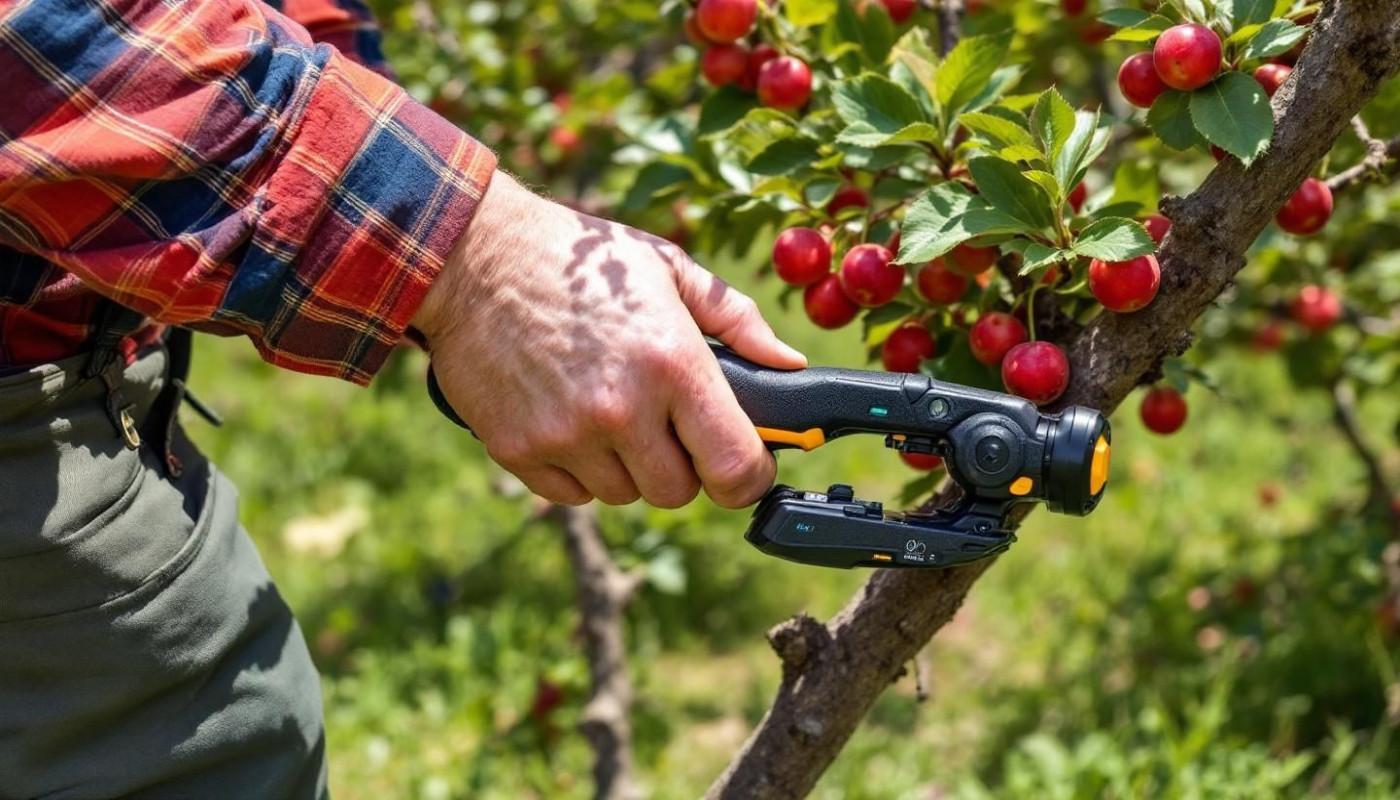Table of contents
Ultrasonic repellers have emerged as a promising technology in the ongoing quest for safer and more eco-friendly pest control solutions. With claims of driving away rodents and insects using high-frequency sound waves, these devices are gaining attention from homeowners and businesses alike. Discover the science behind ultrasonic pest control, its actual effectiveness, and what you need to know before adopting this innovative approach in your own space.
Understanding ultrasonic technology
Ultrasonic repellers operate by emitting high-frequency sound waves, typically in the range of 20 to 65 kHz, which are above the auditory range of humans but well within the detectable spectrum for many common pests, including rodents and insects. The mechanism relies on the scientific interaction between these ultrasonic sound waves and pest physiology, where the animals’ sensitive auditory systems experience what is known as the auditory stress threshold. When exposed to persistent high-frequency sound, pests are subjected to a form of sensory overload, causing disorientation, discomfort, and ultimately driving them away from the treated area. This approach makes ultrasonic pest control a non-toxic and contactless alternative to chemical pest deterrents.
Despite the technological appeal, there are inherent limitations to consider. Ultrasonic sound waves travel in a straight line and have limited ability to penetrate solid objects such as walls, furniture, and dense fabrics, which can create uneven zones of effectiveness within a building. The efficacy of these devices depends on room layout, object placement, and the specific sensitivity of different pests to auditory stimuli. For those seeking a more technical breakdown of how ultrasonic repellers work and advice on optimizing installation, discover here provides in-depth resources and expert guidance on maximizing the benefits of ultrasonic pest control.
Evaluating scientific research
Recent scientific studies pest control have investigated the efficacy of ultrasonic repellers using both laboratory and field tests. In controlled laboratory environments, researchers often set up experiments with a control group to compare the behavior of pests exposed to ultrasonic devices against those not exposed. Lab results pest repellents frequently indicate that certain pests may temporarily change their movement patterns when exposed to ultrasonic frequencies, yet these effects tend to diminish over time as the pests adapt. Field tests, which introduce variables such as furniture, walls, and ambient noise, usually show even less promising outcomes. Many studies report that the reduction in pest activity observed in laboratories does not translate effectively to real-world settings, highlighting discrepancies between manufacturer claims and actual results.
Another critical aspect under review is the placebo effect, especially in home environments where users expect a reduction in pests after deploying ultrasonic repellers. This expectation can lead to subjective reports of improvement, which do not always align with objective measurements conducted by researchers. Scientific studies pest control emphasize that rigorous evaluation using blinded methodologies and control groups is necessary to obtain unbiased data. These approaches help differentiate between genuine efficacy of ultrasonic repellers and perceived changes that are not substantiated by rigorous observation or quantitative analysis.
Independent reviews and meta-analyses consistently highlight the gap between the marketing of ultrasonic devices and scientifically validated performance. While some ultrasonic devices may offer a modest, short-term deterrent effect in specific laboratory scenarios, consistent and substantial pest control is rarely achieved in field tests. The consensus among entomologists and pest management professionals is that, while ultrasonic repellers are appealing for their non-toxic approach, their efficacy remains limited according to current scientific evidence, underscoring the need for careful consideration before relying solely on these devices for pest management.
Benefits and limitations
When evaluating ultrasonic pest repellers, several advantages of ultrasonic pest control become apparent. These devices operate as eco-friendly pest deterrents, using high-frequency sound waves to drive away pests without relying on toxic chemicals. Their non-toxic pest solutions have made them especially popular among families seeking child-safe pest control; the absence of harmful substances minimizes risk to children and pets, and their operation is generally silent to humans. In terms of convenience, ultrasonic repellents require minimal maintenance, usually only periodic dusting and ensuring the device remains plugged in, and their installation is generally straightforward, making them an accessible option for most households.
Despite these benefits, ultrasonic repeller drawbacks must be considered. A significant limitation is that these devices may also impact non-target organisms, such as beneficial insects or pets sensitive to sound frequencies, raising questions about broader ecological effects. Additionally, scientific studies have produced mixed results regarding their effectiveness, with some pests displaying habituation or resistance over time. There is a widespread misconception that ultrasonic devices provide a universal solution for all types of infestations; in practice, their efficacy can be limited by room layout, furniture, and the specific pest species involved.
From an environmental perspective, ultrasonic pest repellers offer a more sustainable alternative to chemical pesticides, reducing the risk of soil and water contamination. They contribute to eco-friendly pest deterrents by eliminating the need for chemical runoff and reducing harm to non-target organisms. However, users should be aware of possible limitations and avoid overreliance on a single method, as integrated pest management strategies generally yield better results. In sum, while ultrasonic pest repellers hold promise as non-toxic pest solutions and present clear advantages in terms of safety and environmental impact, their use should be approached with informed expectations and an understanding of their limitations.
Practical considerations for users
For those exploring how to use ultrasonic repellers efficiently, a few pest control tips can make a noteworthy difference in outcome. Positioning the devices at an appropriate height—typically 20 to 40 inches above the ground—helps optimize the ultrasonic coverage area. Since most ultrasonic waves do not penetrate solid objects or walls, it's recommended to place the units in open areas free from blockages such as curtains or furniture. Assess the effective range of each device, which is usually specified in the user guide pest deterrents provide, to ensure adequate coverage without overlapping units unnecessarily, as this can cause interference and reduce overall performance.
Regular maintenance is vital for proper repeller placement and consistent function. Keep the devices clean and dust-free, since debris can dampen ultrasonic output. Plug the units directly into wall outlets rather than using extension cords, which may limit their capabilities. Set realistic expectations, as ultrasonic repellers are typically most successful when used as part of an integrated pest management approach rather than as a sole solution. Monitor pest activity over several weeks, and adjust the positioning if results are not meeting expectations. By carefully following these user guide pest deterrents and understanding the effective range, users can maximize the benefits of these modern devices in their pest control efforts.
Future of pest control technology
The arena of future pest control technology is experiencing rapid transformation as smart pest repellers and next-generation pest deterrents become increasingly integrated into everyday environments. One notable trend is the seamless incorporation of ultrasonic advancements into smart home systems, allowing homeowners to monitor and adjust pest management strategies through mobile applications and automated settings. This connectivity offers not just convenience but also real-time adaptability, making pest management innovation more responsive to changes in pest activity and environmental factors. Enhanced control over frequency modulation enables devices to target a broader spectrum of pests while minimizing disruption to pets and humans, addressing a longstanding challenge in this field.
Pest management innovation in ultrasonic repeller design is not solely about digital integration but also about refining the scientific mechanisms underlying these technologies. Engineers and researchers are exploring adaptive frequency modulation to create repellents that can alter their emission patterns in response to pest resistance or behavioral changes. These advancements promise to reduce the risk of pest habituation, a limitation that has historically undermined the efficacy of ultrasonic devices. Attention is also being directed towards energy efficiency and sustainability, as next-generation pest deterrents aim to reduce environmental impact while maintaining robust performance in both residential and commercial settings.
Despite promising developments, the evolution of smart pest repellers necessitates ongoing, rigorous scientific evaluation to validate effectiveness and ensure user safety. Collaboration between technology developers, entomologists, and regulatory bodies is vital to produce reliable data and set industry standards. This interdisciplinary effort will not only foster consumer confidence but also pave the way for future pest control technology that is both innovative and trustworthy. With the convergence of artificial intelligence, sensor technology, and advanced frequency modulation, the future of pest management is poised to become more targeted, efficient, and integrated into the smart homes of tomorrow.
Similar

Exploring The Effectiveness Of Mulchers Vs Chippers In Land Restoration

How Modern Electric Pruning Tools Transform Agricultural Practices?

Where can we buy a premium rainwater chain ?

